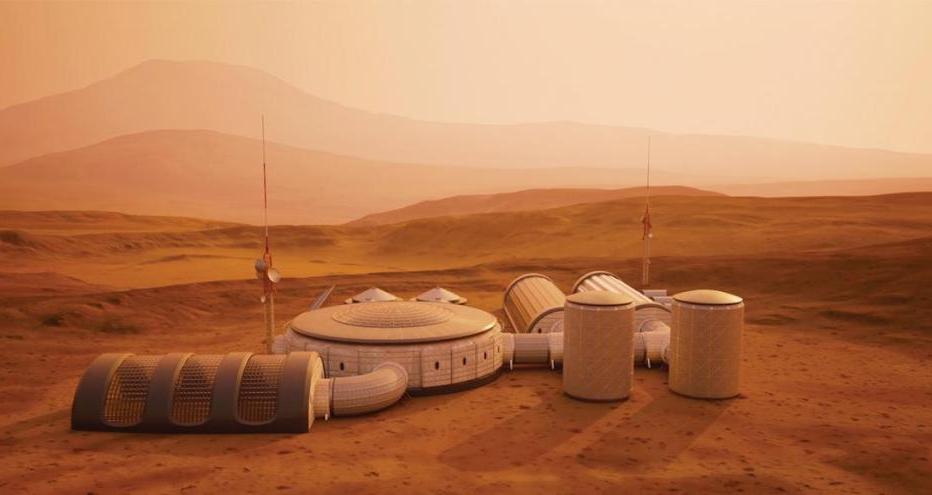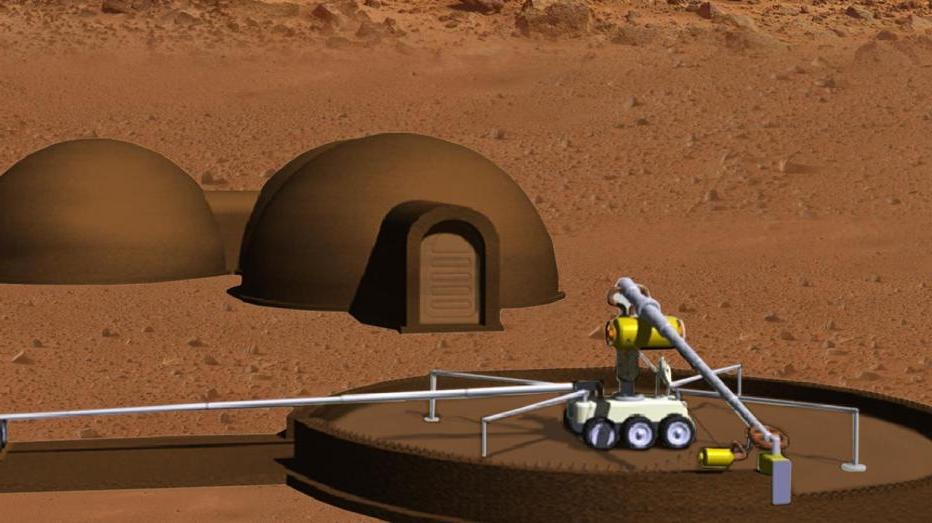




It’s been 48 years since David Bowie’s hit song, “Life on Mars” hit the airwaves, but the question in its chorus, ‘Is there life on Mars?’ remains a pop culture and scientific phenomenon.
Supporting future exploration of Mars, 它的过去和其他遥远的太空位置取决于设计和建造宇航员在地表生活和工作的宜居场所. On Earth, 随着人口激增,对住房和首页的需求正迅速超过其承受能力. Estimates from McKinsey Global Institute project that by 2025, around 1.60亿城市居民可能难以获得体面的住房.
但如果我们向你展示雅各布斯和美国宇航局的科学家们是如何探索行星栖息地制造和组装技术的呢, such as 3D printing, to develop options for practical, 无论是在陆地上还是在太空中,经济实惠且灵活的结构都能蓬勃发展?
estimated savings in material launched from Earth
day of construction vs. the traditional 5
“能够按需3D打印我们需要的任何结构或部件, using feedstock made from in-situ resources, will enable us to be independent of Earth, 这样我们就可以发展我们自己的地面首页,并根据需要创建我们自己的备件. Additionally, 我们可以在行星表面生产的任何东西都不需要从地球发送出去,这将节省发射这些材料的时间和成本——这对美国宇航局来说是一个改变游戏规则的因素.”
前往火星的单程旅行将花费宇航员6到9个月的时间,一旦他们到达火星, there would need to be habitable places for them to stay. Given the time it takes to get to Mars, 而且,一旦进入太空,宇航员就不能把去商店买补给品添加到他们的待办事项清单中, 3D打印正在探索以前认为不可能的选择.
To get ready for the building of roads, berms and structures on the planet, 雅各布斯和美国国家航空航天局乔治C. Marshall Space Flight Center (MSFC) in Huntsville, 阿拉巴马州正在试验3D打印机,以及它们为一种被称为增材制造的过程所带来的好处.
Like other additive processes, additive construction 首先将零件的计算机几何模型转换为3D打印机的一组打印说明. Then, the structure is printed, layer by layer, using the defined coordinates and printing parameters.
When it comes to designing these structures, 我们团队的首要任务之一是研究地球的土壤化学, 矿物学和地质力学特性——开发建筑材料的关键, from the in-situ resources, that can withstand Mars’ cold, airless and rusty desert surface. 这些研究将有助于设计能够提供辐射和弹道防护的结构,并在低压环境下最大化结构支持.
据估计,3d打印首页和使用当地材料的建筑可以减少从地球运输的材料量60%到90%, 显著降低建筑成本和时间,甚至通过使用更少的材料和产生更少的废物来减少对环境的影响. 该团队已经成功地利用火星模拟物制造了水泥建筑材料,他们希望有一天能实现这一目标, after more research into strength, oxidation barriers, radiation shielding potential and more, 他们将能够使用3D打印技术制造一个完整的前哨基地.

虽然在火星上建立3D打印首页的想法非常酷, 增材建筑技术的起源更加接地气. 雅各布斯甚至还在协助这项技术进入其他市场, 比如军事应用以及州和地方政府.
对于更广泛的社会来说,利用增材结构来解决地球上迫在眉睫的问题的潜力, such as the housing crisis, is particularly exciting. Nearly 30 million U.S. households 面临以下一个或多个问题:成本负担、过度拥挤和空间不足. Worldwide, 而发展中国家的大城市一直在以每年接近5%的速度增长, 贫民窟和棚户区的增长速度几乎是现在的两倍.
增材结构是适应性强的,按需的,可以在各种设置中使用. 这项技术可以在一天内建成简单的军事基地住房, instead of the typical five. Currently homes in the U.S. take more than half a year to construct. 3D printing is more cost economical, using just half the material used for typical builds; and it also requires fewer personnel – which could free up more time to build additional structures to help bridge the housing gap.
最近,在雅各布斯的支持下,美国宇航局MSFC太空制造团队的成员开发了一种 full-scale additive construction system for the U.S. 伊利诺斯州尚佩恩的陆军工程兵团(COE)研究实验室. The COE and the U.S. 夏威夷州有兴趣使用这项技术来减少从大陆进口材料的需求. 想象一下,在面对美国面临的问题时,这项技术可以实现什么.S.中国的传统首页,如道路和供水系统.